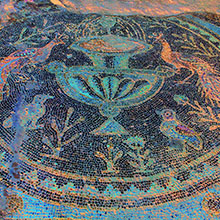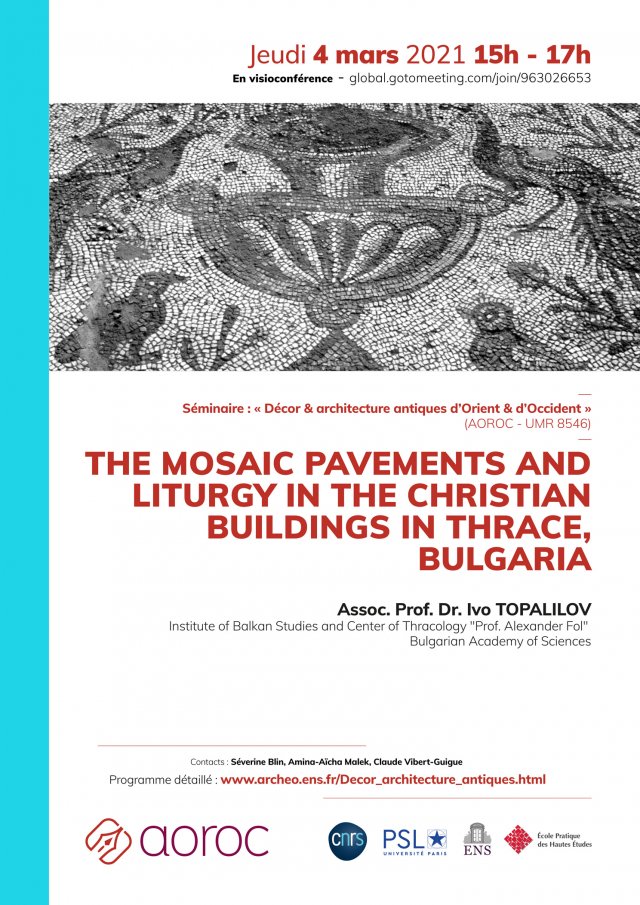
The mosaic pavements and liturgy in the Christian buildings in Thrace, Bulgaria
Ivo Topalilov
Jeudi 4 mars 2021, 15h-17h.
Visioconférence : https://global.gotomeeting.com/join/963026653
Par téléphone : +33 170 950 594
Code d’accès : 963-026-653
Conférence dans le cadre du séminaire « Décor & architecture antiques d’Orient & d’Occident »
Ivo Topalilov
Institute of Balkan Studies and Center of Thracology « Prof. Alexander Fol »Bulgarian Academy of Sciences
The mosaic pavements and liturgy in the Christian buildings in Thrace, Bulgaria
With the decision known as Canon 28 taken at one of the meetings of the Fourth Ecumenical Council in Chalcedon in 451 CE, the Thracian diocese de jure passed under the jurisdiction of the Church of Constantinople. As a consequence, the whole clergy fell under the auspices of the metropolitan bishop and a firm control was established on the religious life. The archaeology reveals that this is reflected in the architecture of the Christian basilicas with the introduction of the polygonal apse, following a prototype in Constantinople. It seems that this is not the only change that occurred. In the third quarter of the 5th century, the Episcopal basilica in Philippopolis received a new mosaic floor decoration that emphasized on the outer aisles in the naos and the entrance. The mosaic was constructed by mosaicists of a metropolitan workshop. It seems that this is not the only such example as the basilica in Heraclea (former Perinthos) received the same decorative system at the same time. Given the specifics of the symbols used, the places pointed out from them, as well as the metropolitan influence over the architecture of the Christian buildings in Thrace, this presentation discusses the possibility of spreading the Constantinopolitan liturgy in the region via the mosaic floor decoration.
Responsables : Séverine Blin, Amina Aïcha Malek, Claude Vibert-Guigue







